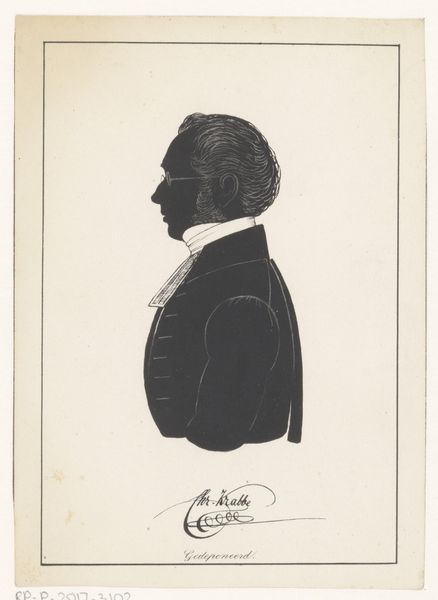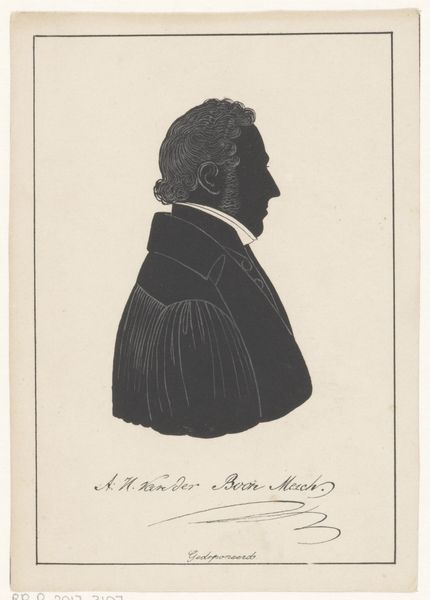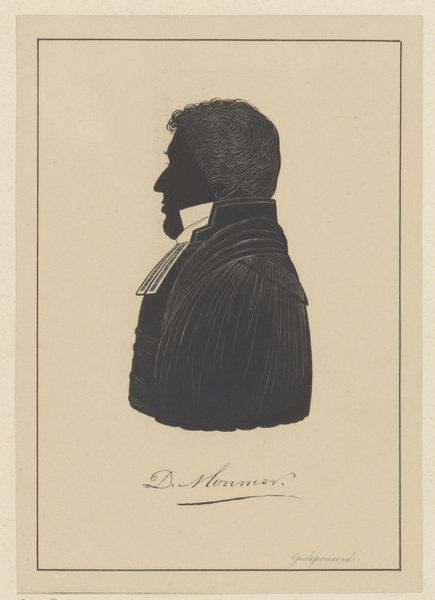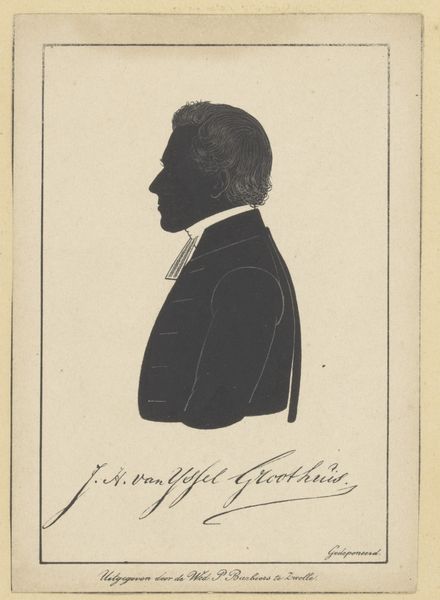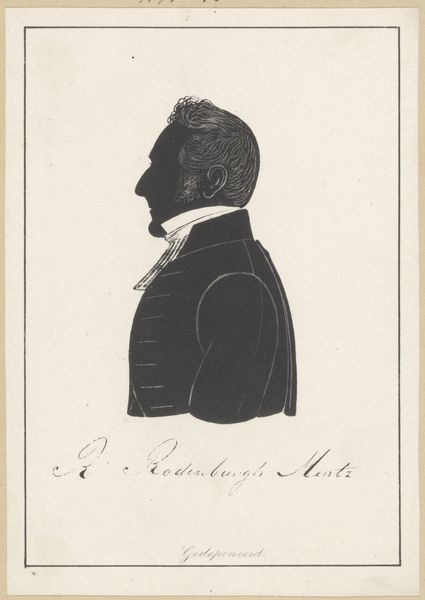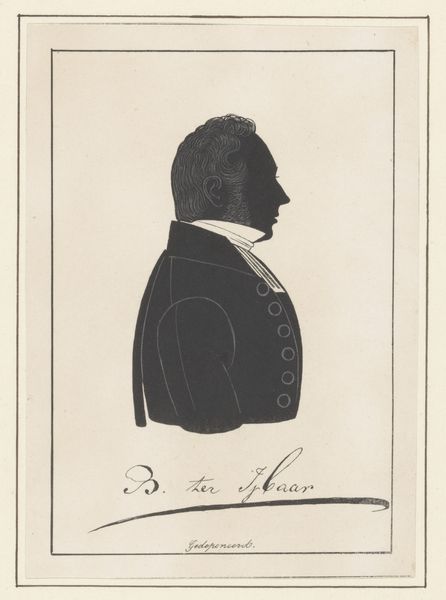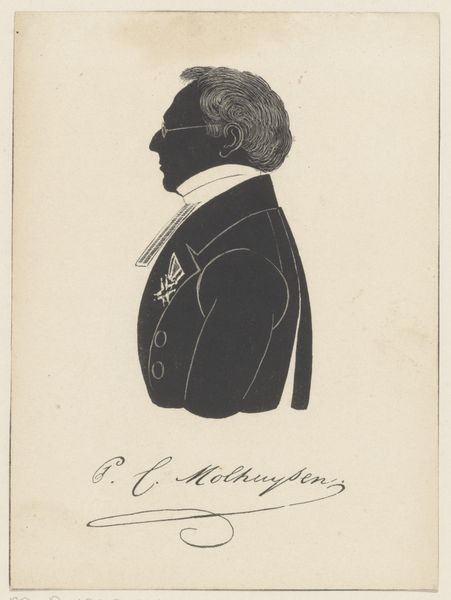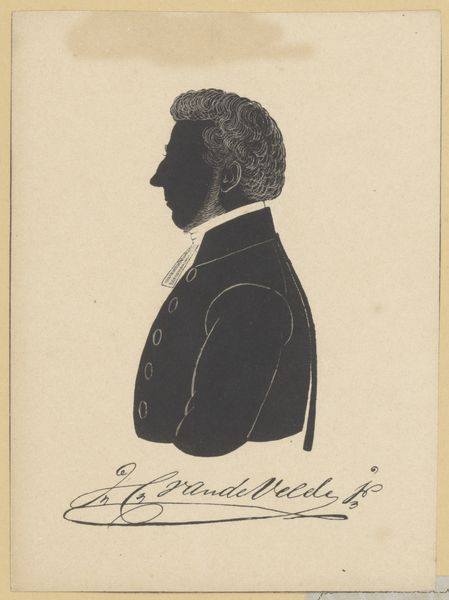
drawing, graphite
#
portrait
#
drawing
#
self-portrait
#
old engraving style
#
caricature
#
form
#
romanticism
#
line
#
graphite
#
academic-art
Dimensions: height 156 mm, width 111 mm
Copyright: Rijks Museum: Open Domain
Curator: Here we have a profile portrait, rendered in silhouette. The Rijksmuseum attributes this drawing, made with graphite, to Pieter Barbiers IV, dating it to between 1809 and 1848. The work is titled "Silhouetportret van Jacob François van Hoogstraten." Editor: Striking how this dark figure is suspended in this stark white space. The formal compression into outline emphasizes the sitters bearing. It possesses such confidence. Curator: Consider the context in which this piece would have been created. Silhouette portraits were a popular and relatively inexpensive alternative to painted portraits, particularly among the emerging middle class. Barbiers, a prolific artist, likely produced many such portraits, offering a means for a wider range of people to participate in portraiture culture. Editor: Yes, I'm thinking also how the Romantic style favored dramatic contrast. This silhouette captures a mood, distilling essence into a set of potent lines. We could read this starkness in contrast against, say, the elaborate court portraiture of the previous century. Curator: I’m curious about the artistic labor involved in these pieces. The precision needed to trace a likeness accurately, and then render it consistently in solid black, demanded skill. And further, graphite production was not consistent across Europe at this point: access to those raw materials informed availability and, surely, aesthetic choices. Editor: Absolutely, there’s an intellectual argument to be made for those sharp, clean lines in comparison to works made using a wider palette, in which the lines might bleed slightly. You can't escape line in silhouette portraiture. Curator: Indeed. And the reproducibility of these silhouettes via tracing, and even mass production, democratizes portraiture by shifting away from individualized patronage. Editor: Interesting. So, the artwork operates within a network of class aspirations and technical possibilities—it provides some valuable social insight. Curator: Precisely. We begin to see how portraiture adapted and was, itself, re-made by emerging materials and different social structures. Editor: A captivating demonstration of line, form and even class aspirations. It invites viewers to look more intently at the stark features that compose an entire character.
Comments
No comments
Be the first to comment and join the conversation on the ultimate creative platform.
